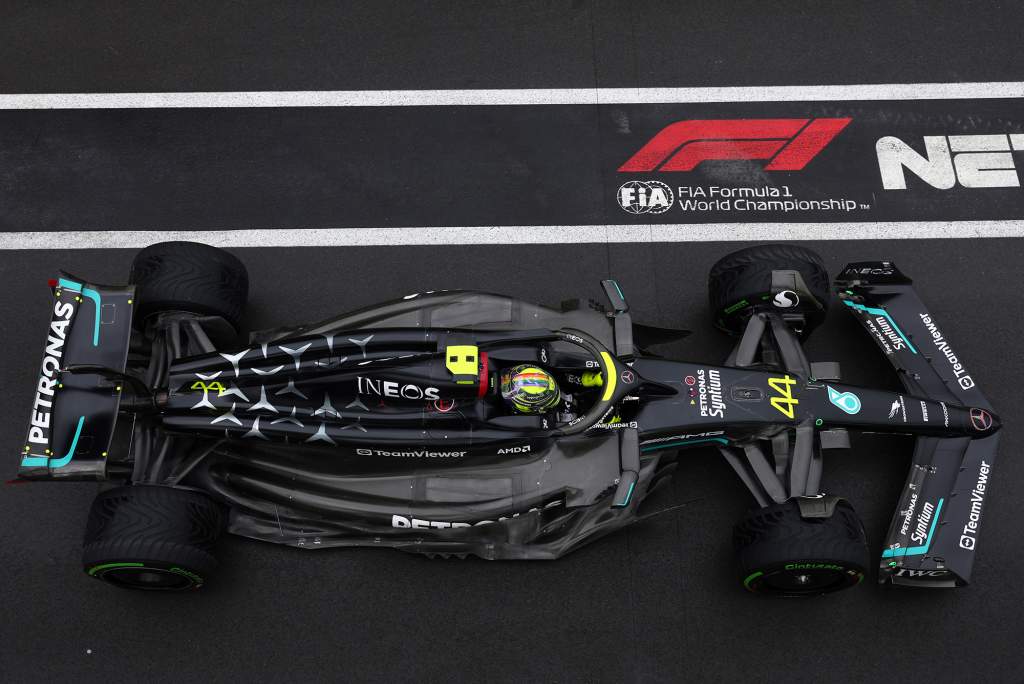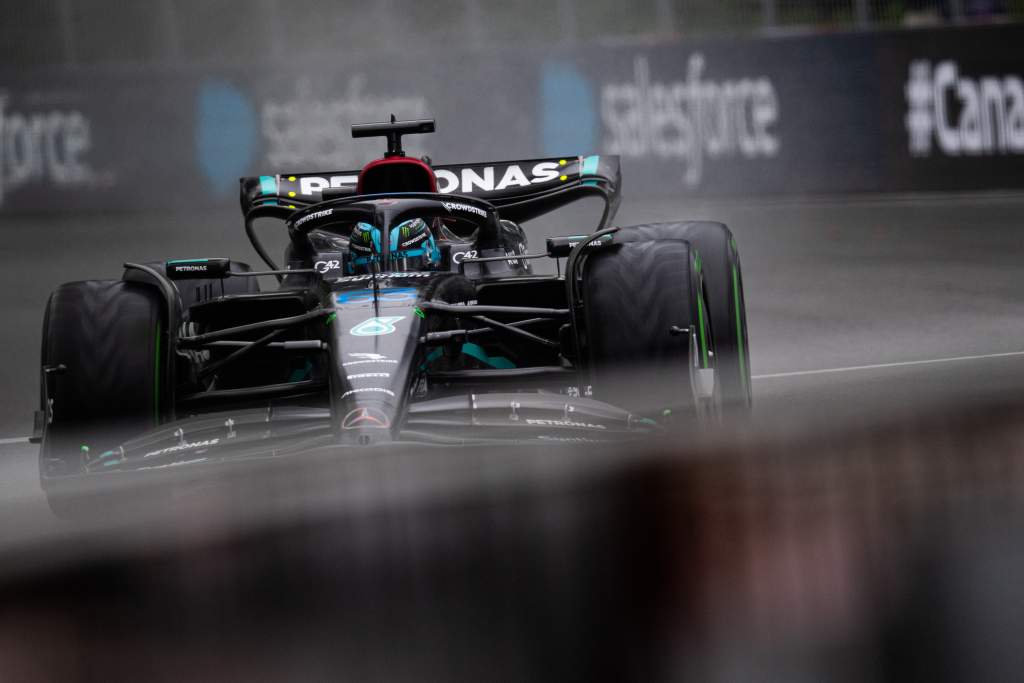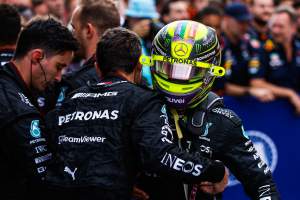The recent introduction of its much-anticipated upgrade package, and the resulting upturn in Formula results, has led to a “cascading” benefit within the Mercedes Formula 1 team, according to team principal Toto Wolff.
The revised Mercedes W14 made its first appearance at last month’s Monaco Grand Prix. It represented a significant change in development direction, with changes to the floor and sidepods/engine cover and front suspension the key modifications. The drivers immediately reported it was an improvement in terms of the stability under braking.
The changes have led to an upturn in form, with Mercedes moving 13 points ahead of Aston Martin in the battle for second in the constructors’ championship having been six behind prior to Monaco.
Mercedes has taken three podium finishes in the last two races in Spain and Canada having managed just one all season prior to that, although it still lags behind pacesetter Red Bull in performance terms and is 154 points adrift in the standings.
Further upgrades are planned, including what Wolff describes as a “larger” package for the British Grand Prix at Silverstone next month and then at least one other package before the end of the year.
Wolff says the impact of the much-needed boost this has all given Mercedes personnel should not be underestimated.
That goes beyond the pure morale boost of results being better. The fact upgrades are paying off now after previous wrong turns is also giving Mercedes confidence in the correlation between its simulations and windtunnel work and on-track performance again.
“We can see the positive dynamic literally cascading, transcending into the organisation,” said Wolff.
“We feel that the car is coming together, we see that our data yields results on track and we haven’t felt that since a long time ago.
“Obviously this contributes to being in a very good place now.”

Wolff characterises the team as “cautiously optimistic” following a positive Canadian Grand Prix weekend at a Montreal circuit that didn’t play to the strengths of the car.
The Mercedes remains at a disadvantage on the straights compared to the aerodynamically-efficient Red Bull. Despite improvements to the rear-end grip, this is still an area where there is room for further gains and hurt particularly in the traction zones in Montreal.
Mercedes was third-best in Montreal, but not by much given Lewis Hamilton jumped Fernando Alonso’s Aston Martin at the start and, after losing the place early in the second stint, finished a close third.
His team-mate George Russell was set for fourth before damaging his car.
“Going from Barcelona to here, two quite contrasting circuits, bodes well for the future,” said Russell when asked if Montreal performance was encouraging.
“Of course, we are looking for more than just second best, we need to close that gap to Red Bull. But it definitely shows we’re on the right path.”
The next step on that pathway is the Silverstone upgrade, which Wolff characterises as building on what has been learned from the early outings with the new package – and taking advantage of the fact Mercedes now feels it can once again trust the validity of what it’s learning.
“We are understanding the simulations better, and that correlates with what we are seeing on track,” said Wolff when asked by The Race about Mercedes’ recent improvements.
“That’s been our problem over the last one and a half years.
“We are seeing good performance gains that are coming in the tunnel. We are seeing a better understanding of what the car needs in order to go fast and the set-ups need to look like.
“The steps are getting bigger now. I think we’re making good inroads.”

The Mercedes upgrade has offered improvements not only in terms of aerodynamic performance but also the mechanical platform control. However, there are limitations in terms of how much can be changed in-season owing to the constraints of the cost cap and the gearbox homologation rules that limit rear suspension changes.
Mercedes has confirmed there will be larger architectural changes in the 2024 car. This could include moving the cockpit further back after criticisms from Hamilton and modifying the rear suspension geometry.
Wolff says that despite the major changes to the current car, the team is on target with its development spending this year and that there will be no extra compromise in terms of the resources left to continue to improve the W14 and to ensure the necessary changes are made with next year’s W15.
“We have set up a huge organisation in our financial department of 46 people that monitors the cost caps down to the last screw and we look at the trend of our spend during all of the year,” said Wolff when asked by The Race about balancing up ongoing development and design work on next year.
“What we’ve done is basically allocated resource to various projects and we’ve stayed below that line all year last year, and we are still below that line this year. And that is considering, let’s say, a normal development switch for next year and it’s still pretty much on track.
“The good thing is that we’re constantly learning about what the car’s doing. There are going to be some fundamental design changes for next year, but it’s not that we are building stuff, it’s more like what are we simulating but that is not measured in money, it’s the teraflops and windtunnel runs.”

Mercedes will take a small hit in terms of its available windtunnel runs and CFD items at the start of next month when the aerodynamic testing regulations allocation is reset.
This is thanks to holding second in the constructors’ championship having finished third last year. That means a 5% reduction in its ATR allowance, the mechanism in the rules that allows greater development opportunity to teams further back in the standings in an effort to help close the field up.




